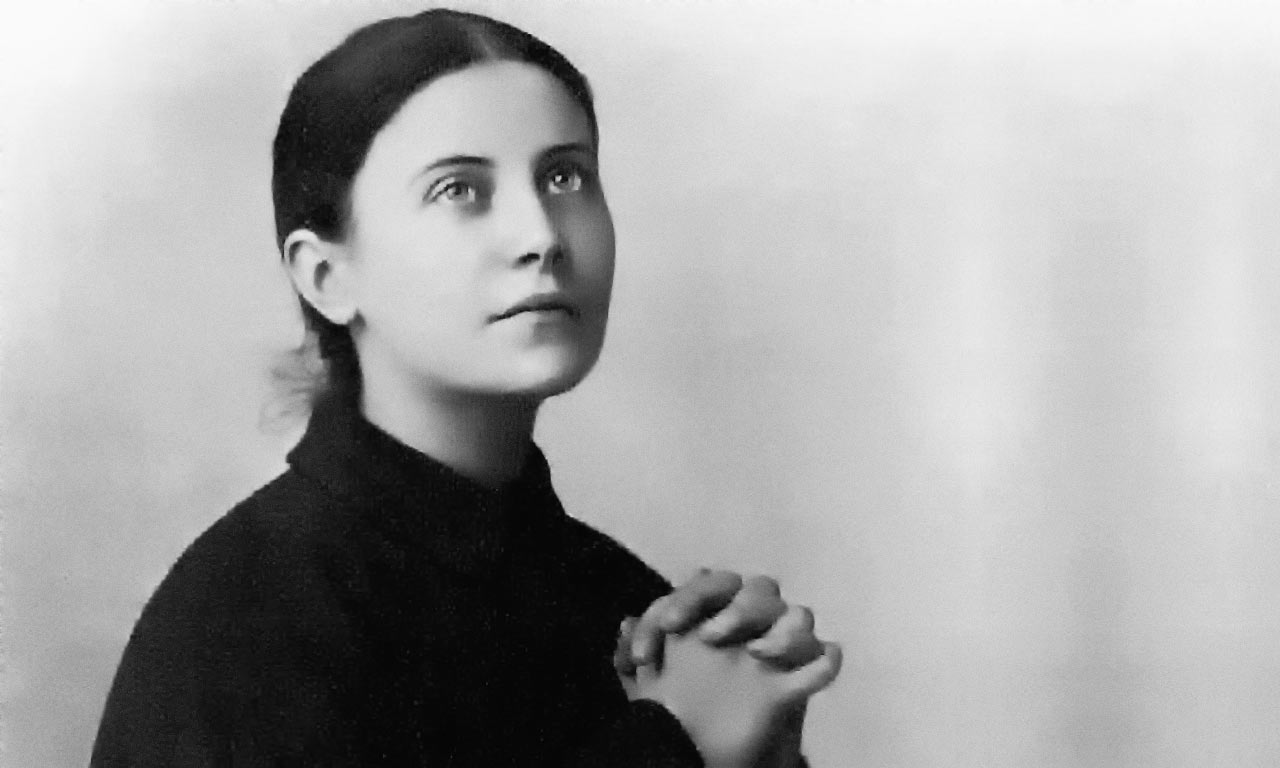Throughout the entire history of the Catholic Church, we have been encouraged to meditate on the passion of Jesus. In so doing, we come to realize the terrible torture which our good Jesus voluntarily accepted at the hands of his own creatures in order to save us from sin and eternal death.
Such meditation is intended to stimulate a deep abiding gratitude in our poor human hearts and to encourage us to accept our own crosses with love instead of with resentment. If the Son of God had to suffer so horribly for us, why should we inferior lesser beings balk at our own pain? In fact, our pain no matter how hurtful it is to us, can never match the indescribable pain which Our Lord freely accepted at Calvary.
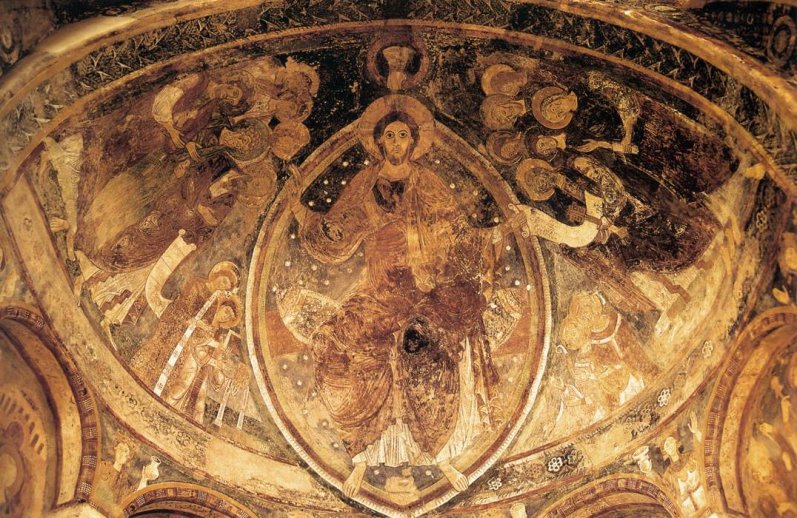 Saint Gemma Galgani was told this by Jesus, "Look at what Jesus has suffered for men: consider one by one these wounds: it is love that has opened them all. See how accursed sin is, since to expiate it, so much pain and so much love has been necessary".
Saint Gemma Galgani was told this by Jesus, "Look at what Jesus has suffered for men: consider one by one these wounds: it is love that has opened them all. See how accursed sin is, since to expiate it, so much pain and so much love has been necessary".
Jesus said to Saint Faustina, “From all my wounds, like from streams, mercy flows for souls, but the wound in my heart is the fountain of unfathomable mercy. From this fountain spring all graces for souls. The flames of compassion burn me. I desire greatly to pour them out upon souls. Speak to the whole world about my mercy.”
Here Jesus, like the Church, is asking us to dwell on his passion, to "Consider one by one these wounds". He is not expecting us thereby to become depressed. No! He wants us to marvel at his mercy and his love. He knows that by entering into the depths of his mercy, we become lifted up into praising him for his great act of redemption. Did he not say in John 12:32, "And when I am lifted up from the earth, I shall draw all people to myself”?
Therefore it is a good and holy thing to spend time contemplating the passion of the Lord, from Gethsemane through to his last great cry from the cross, "It is finished." We must, at Jesus' invitation, enter into his passion if we too are to be lifted up by our cross and draw other men and women to Jesus.
But there is a problem with doing this well, at least for Christians of today who are so far removed from the historical crucifixion event of 2000 years ago. After all we do not crucify criminals today, thank God, and that makes it very hard for us to grasp just how cruel this punishment really was. We look at a crucifix these days and it all looks like a nice peaceful scene. There is Jesus serenely asleep on the cross and it has become such a familiar image in our churches and hopefully our homes, that we fail to be shocked at the awful reality of it all.
Well, the agony of our sinless, all-loving, all-merciful, all-forgiving, Master Jesus was truly a dreadful thing. It was a litany of pain beginning with the agony in the Garden of Gethsemane and lasting something like 18 hours before he finally commended his Spirit into the hands of his loving Father in Heaven.
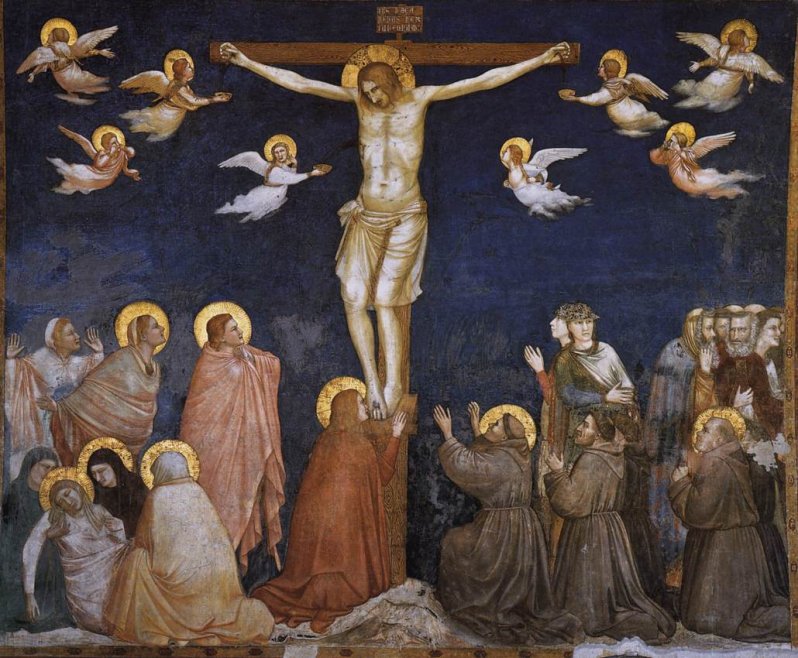
As a medical doctor, I have studied the passion and the more I look at it the more stark it becomes for me. I can never ever give you anything like a complete picture, but I hope that what I am so far able to relate will help you all to a deeper appreciation of just how precious you are in the sight of Jesus that he would, with full knowledge of all that would happen to him, still freely walk like a lamb to the slaughter in order to pour out his mercy upon us all. If what follows prompts you to love Jesus more, I will be content.
First of all, we must remember that Jesus knew every detail of the manner of his death long before it took place. Think about that. If we knew how we were going to die years in advance, especially if it was going to be a painful death, would we not suffer great psychological torment at the very thought of it? We would be living in constant anticipation of our pain. I think we would. Yet Jesus who was Divine carried that knowledge with him throughout his 33 years of life. His whole life was a passion. It was a long slow preparation for the Calvary event. Likewise, his mother Mary knew of the manner of her Son’s death. So she too suffered so many years, anticipating Jesus’ dreadful agony and death. It was indeed a sword which pierced her Immaculate Heart.
We would be likely to be so paralysed by such a fore-knowledge that we would stop living life to the full and simply sit in fear waiting for death to catch up with us. But not Jesus. In spite of death's dreadful promise, he lovingly attended to his mission of preaching, teaching, loving and healing. What an amazing Man. What a magnificent Lord. What a merciful God!
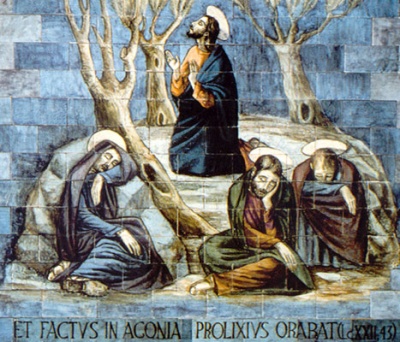 On Holy Thursday, Jesus went into the Garden of Gethsemane. There he experienced his greatest pain. This pain was far, far greater than the physical torment he would face the next day. That awful night, he saw and took on all the sins of the world, every sin that had ever been committed from the time of Adam and Eve up to then, all the sins that were being committed at that very moment throughout the world, and then he looked down through time and saw my personal sins and the sins of all of us and he willingly took them onto his shoulders. Is it any wonder he sweated blood? Doctors will tell us that for a man to sweat blood, which is called hematidrhosis, he must be in unbelievable and unrelievable pain. The small blood vessels on the surface of the skin, dilate and throb, the vessel walls become stretched and thinned out and then blood oozes out of these vessels and into the sweat glands. Luke the Evangelist, who was a Doctor described it very well, he wrote, “In his anguish, he prayed even more earnestly, and his sweat fell to the ground like great drops of blood (Luke 22:44). Notice a powerful lesson for us here. We are told in the Gospel that Jesus in his anguish “prayed even more earnestly”. As a result, an angel was sent to strengthen him. Likewise, when we are in great pain of any kind, we too should pray even more earnestly and beseech heaven continuously. God in his mercy will be moved to send us an angel to strengthen us and help us to carry our cross.
On Holy Thursday, Jesus went into the Garden of Gethsemane. There he experienced his greatest pain. This pain was far, far greater than the physical torment he would face the next day. That awful night, he saw and took on all the sins of the world, every sin that had ever been committed from the time of Adam and Eve up to then, all the sins that were being committed at that very moment throughout the world, and then he looked down through time and saw my personal sins and the sins of all of us and he willingly took them onto his shoulders. Is it any wonder he sweated blood? Doctors will tell us that for a man to sweat blood, which is called hematidrhosis, he must be in unbelievable and unrelievable pain. The small blood vessels on the surface of the skin, dilate and throb, the vessel walls become stretched and thinned out and then blood oozes out of these vessels and into the sweat glands. Luke the Evangelist, who was a Doctor described it very well, he wrote, “In his anguish, he prayed even more earnestly, and his sweat fell to the ground like great drops of blood (Luke 22:44). Notice a powerful lesson for us here. We are told in the Gospel that Jesus in his anguish “prayed even more earnestly”. As a result, an angel was sent to strengthen him. Likewise, when we are in great pain of any kind, we too should pray even more earnestly and beseech heaven continuously. God in his mercy will be moved to send us an angel to strengthen us and help us to carry our cross.
During the mockery of a trial before the Sanhedrin, a trial which was illegal since it was conducted at night, contrary to Jewish law, Jesus was punched in the face. As a result, his nose was painfully dislocated, but not broken. Then he was dragged before Pilate who ordered him to be scourged and a Roman scourging was merciless. The instrument used is called a flagrum which is a short thick stick which has up to five leather thongs hanging from one end. Attached to the tips of the thongs are lead dumbbells or sometimes pieces of bone. A soldier would strike the prisoner’s body, the lead would embed itself in the skin and then with a violent motion he would pull the flagrum back bringing with it pieces of flesh. By the time the scourging was over there would have been very little skin left on Jesus’ body.
During the making of the film “The Passion of Christ”, Jim Caviezel played the part of Jesus. At the scourging, he was chained to a pillar, but hidden from the camera, there was a shield placed over Jim’s back so the man acting as a Roman soldier could put his whole force into the flagellation. But during one such blow, the soldier missed the shield and actually struck Mr. Caviezel. The pain was so intense that Jim was not able to cry out. He lost his breath and the shock was so much that he cut his hands on the chains binding him to the pillar. And that was only one blow. Jesus received dozens of blows.
Meanwhile because of the force of the scourging on the chest wall, Jesus’ chest was filling up with fluid, a condition we call pleurisy so that he became increasingly short of breath, because his lungs were being compressed. His heart was going into failure and as a result fluid accumulated in his feet and ankles and lower legs. He was now extremely dehydrated, experiencing a raging thirst, his tongue was swollen and stuck to the roof of his mouth, and he had a burning fever.
To add to his torture, the soldiers then fastened a cap of thorns onto his holy head. These thorns are one to two inches long and they are green and ooze out a sap which is like acid. They deliberately beat this cap down onto his head with blows from a reed and this would drive the thorns more deeply into his skull.
Then the cross was roughly placed on his shoulders. It is impossible to imagine the pain of that weight upon a body so lacerated. Jesus had very little lung capacity left with which to gasp for oxygen and this alone called for a superhuman effort to drag the cross all the way to the top of Calvary. It is little wonder that he fell three times. A lesser man would have collapsed completely, and every time he fell, the Roman soldiers lashed him repeatedly to make him get up and carry on.
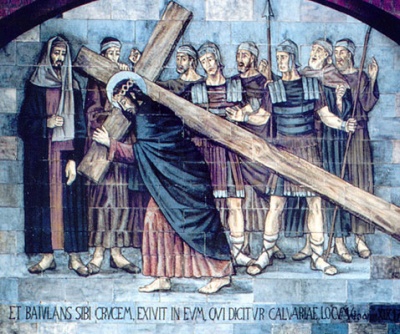 At Calvary, the soldiers threw the cross onto the ground and they made Jesus spread himself upon it. The cross piece is called the patibulum and the Roman carpenter had already drilled two holes in it to receive the nails. Roman nails were really blunt spikes, not all that sharp, and so it made things a lot easier if they were being driven into holes already prepared. The first spike was driven through Jesus’ wrist into a point called the Space of Destot. The nail would then pierce the median nerve and this would send an excruciating shock of pain to the brain. As a result, the muscles of the thumb became paralysed and the thumb curled over onto the palm of the hand. And this is exactly what is found on the image of the Shroud of Turin. Also, from the evidence on the Shroud, the left shoulder appears to be dislocated, and this is what we would expect if the soldier found that the second wrist to be nailed did not reach all the way to the hole in the patibulum. The cruel soldier was used to such a problem and so he pulled on Jesus’ arm, dislocating the shoulder and in that way the wrist could now be placed over the hole and the crucifixion could proceed. His feet were then nailed to the cross which was then lifted up and dropped into a hole with a bone jarring thud. Jesus was now “lifted up” and by means of this, he was calling all of mankind to himself as if to say, “See what I am freely enduring for you. Look at my eyes and see the divine gaze of mercy upon all of you. From the cross I say ‘Father forgive them for they know not what they do’. In spite of my agony, I love you all, even my murderers.”
At Calvary, the soldiers threw the cross onto the ground and they made Jesus spread himself upon it. The cross piece is called the patibulum and the Roman carpenter had already drilled two holes in it to receive the nails. Roman nails were really blunt spikes, not all that sharp, and so it made things a lot easier if they were being driven into holes already prepared. The first spike was driven through Jesus’ wrist into a point called the Space of Destot. The nail would then pierce the median nerve and this would send an excruciating shock of pain to the brain. As a result, the muscles of the thumb became paralysed and the thumb curled over onto the palm of the hand. And this is exactly what is found on the image of the Shroud of Turin. Also, from the evidence on the Shroud, the left shoulder appears to be dislocated, and this is what we would expect if the soldier found that the second wrist to be nailed did not reach all the way to the hole in the patibulum. The cruel soldier was used to such a problem and so he pulled on Jesus’ arm, dislocating the shoulder and in that way the wrist could now be placed over the hole and the crucifixion could proceed. His feet were then nailed to the cross which was then lifted up and dropped into a hole with a bone jarring thud. Jesus was now “lifted up” and by means of this, he was calling all of mankind to himself as if to say, “See what I am freely enduring for you. Look at my eyes and see the divine gaze of mercy upon all of you. From the cross I say ‘Father forgive them for they know not what they do’. In spite of my agony, I love you all, even my murderers.”
My dear people ask yourself a very serious question. Have I ever been hurt by someone as terribly as Jesus was hurt by me? Jesus forgave me on the cross and it was my sins that put him there. Can I ever point to the worst hurt I have ever received and claim that it is comparable to what Jesus experienced?
While on the cross, Jesus, in spite of his total body pain, was still able to think of his sorrowful mother and to provide for her future. He looked at her and the apostle John and said, “Woman behold thy son” and to John he said, “Son behold thy mother.” Jesus was placing his mother into the loving care and protection of the disciple whom he loved. But there is a very important truth to be realized here. Many non Catholics try to tell us that Mary and Joseph had other children after Jesus, that Jesus had blood brothers and sisters. If that were true, then by proper Jewish law, Jesus would have had to hand over his mother to the care of his next brother. But he did not. The reason for this is so obvious. Jesus did not have brothers and sisters. He was an only child and so he was free to ask John, who was definitely not his blood brother, to take care of her. My friends, Mary was a virgin before, during and after the birth of her Son Jesus. And Scripture proves it. The brothers and sisters of Jesus spoken of in the Gospels were his cousins not Mary’s children.
In the Gospel of John 19:34-37, we are told, “But one of the soldiers pierced his side with a spear and at once there came out blood and water. He who saw it has borne witness. His testimony is true and he knows that he tells the truth, that you also may believe. For these things took place that the Scripture might be fulfilled, ‘Not a bone of him shall be broken.’ And again another Scripture says, ‘They shall look on him whom they have pierced.’” But John is also clearly very keen to impress on us the fact that blood and water came from the side of Jesus, in fact came from his Sacred Heart. I believe that John also had in mind a passage from the Old Testament, the book of Leviticus 14:49-53. This describes the ritual which a priest had to carry out in order to cleanse a house contaminated by leprosy. It says this, “As a sacrifice for the defilement of the house, he will take two birds, some cedar wood, scarlet material, and hyssop. He will slaughter one of the birds in an earthen ware pot over running water. He will then take the cedar wood, the hyssop, the scarlet material and the live bird, dip them into the blood of the slaughtered bird and into the running water and sprinkle the house seven times. And after offering the sacrifice for the defilement of the house with the blood of the bird, the running water, the live bird, the cedar wood, the hyssop and the scarlet material, he will set the live bird free to fly out of the town into the countryside. Once the rite of expiation has been performed for the house in this way, it will be clean”.
This passage is certainly a type, that is to say, an imperfect representation of something perfect that is yet to come. This is a type of the crucifixion, death and resurrection of Our Lord. The cedar wood represents the wood of the cross, the scarlet material recalls for us the robe of Jesus for which the soldiers cast lots, the hyssop is the stick used to lift up the sponge of wine to Jesus’ parched lips. The blood and the water of the cleansing ritual foreshadow the precious blood and water which would flow from Jesus’ pierced heart. The slaughtered bird is the death of the Lord and the bird that is allowed to rise up free into the air, is the resurrection of Jesus from the tomb. A bird dies. A bird lives. Jesus dies. Jesus lives.
This all leads to a beautiful conclusion. What Jesus did on the cross was a priestly act. The Old Testament priest ritually cleansed a house defiled by leprosy. Jesus likewise cleansed the house of Israel from the leprosy of sin. Up to then, the apostles knew that Jesus was indeed a Prophet and King. Now he was revealing himself as the High Priest, cleansing not only the house of Israel, but also the whole world of its slavery to sin and he did this for you and me. To Saint Faustina he said, “On the cross, the fountain of my mercy was opened wide by the lance for all souls. No one have I excluded.” In other words, every single soul on the earth is the beneficiary of the infinite mercy of Jesus. It is entirely up to you and me to decide to invoke that mercy. We can turn our backs on what God is so generously offering us and thereby we will journey deeper and deeper into darkness and risk the loss of God for all eternity, or we can joyfully lay claim to his mercy and accept all of the graces God wishes to pour out upon us. We can go from strength to strength, knowing that we can ask Jesus for anything. We need not fear death anymore and we can go before him with confidence if we have adored and accepted his mercy.
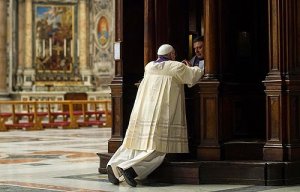 And what was the first gift that Jesus gave to us after his resurrection? He gave us more of his mercy. He gave the apostles the power to forgive sins in the Sacrament of Confession. What an astonishing gift it is. If we really meditate on that, we should be amazed that we mere creatures who sin against the holiness of God, can go before Jesus who is represented by his priest, confess our transgressions no matter how serious, and we receive the miraculous words of absolution. We are cleansed of our own personal leprosy and we walk out of the confessional free from the burden of our guilt. Could Jesus be more generous than that?
And what was the first gift that Jesus gave to us after his resurrection? He gave us more of his mercy. He gave the apostles the power to forgive sins in the Sacrament of Confession. What an astonishing gift it is. If we really meditate on that, we should be amazed that we mere creatures who sin against the holiness of God, can go before Jesus who is represented by his priest, confess our transgressions no matter how serious, and we receive the miraculous words of absolution. We are cleansed of our own personal leprosy and we walk out of the confessional free from the burden of our guilt. Could Jesus be more generous than that?
Well yes he can and is more generous than that. At the last supper, Jesus took bread, broke it and gave it to his disciples saying, “Take and eat. This is my body”. Likewise he took a cup and said, “This is my blood of the Covenant which is poured out for many”.
A dying man usually makes out a will leaving his possessions to his loved ones. Well, this was Jesus’ last will and testament also. But he had no possessions to leave behind. So what did he do? He left behind himself in the form of bread and wine so that even after he had left us and returned to his Father in Heaven, he could still remain with us in the Eucharist in every tabernacle throughout the world. What greater miracle could there be than that we can receive out Saviour God into our body, soul and spirit for our sanctification? But the generosity of Jesus was still not exhausted. He continued to offer us his mercy down through 2000 years of the Church and now through Saint Faustina has instituted a new era of the divine mercy. We are the most blessed of people. We live in an age where mercy is flooding the earth and we are the beneficiaries.
My dear people of God, drink of this mercy and act like you can’t get enough of it because you can’t. And it is free. We all love to get worldly goods for free. Well here are heavenly goods being offered to us for free and yet sadly, so many souls refuse to accept them and thereby risk the loss of God for ever.
Finally, a word of encouragement to our priests from Jesus. He says, “To priests who proclaim and extol my mercy, I will give wondrous power. I will anoint their words and touch the hearts of those to whom they will speak.”
What a wonderful word from Jesus to build up our priests who work so hard for the saving of souls. They need our words of gratitude and our support for them to battle on in a world of increasing darkness. The priest is the bridegroom and you are the bride. A husband always needs the love of his bride in order to be able to protect and provide for his family.
My dear friends in Christ, think about and meditate upon the passion of our good Lord Jesus. The more you can journey with him from Gethsemane to the tomb and as often as you do that, your heart will be moved to enter more deeply into what Jesus suffered for us and you will fall more and more in love with the one who loved us that much. Look into Jesus’ eyes and see that irresistible gaze of mercy with which he looks upon your soul. Look at the blood and water coming from his heart and see the red and pale rays of the image of the Divine Mercy. Yes the passion of Jesus is God’s supreme act of mercy. Nothing before or since has ever demonstrated the infinite degree of love and mercy which God would pour out upon the whole world. And we are the unworthy but grateful recipients of it. Let us never stop saying “Jesu ufam tobie. Jesus I trust in you”. Amen.
Given at St. Hedwig’s Lent Mission on Wednesday, March 2, 2016
Part 1: Divine Mercy | Part 2: Trust in God's Mercy | Part 3: God's Supreme Act of Mercy - The Passion
Deacon Dr. Bob McDonald is a Catholic pysician and psychotherapist who resides with his wife Rita in Barry's Bay. Ontario, Canada.
Some of his talks can be found as audio CD's at | https://www.lighthousecatholicmedia.org/store/speaker/deacon-dr-bob-mcdonald

